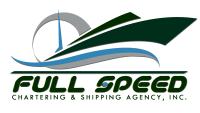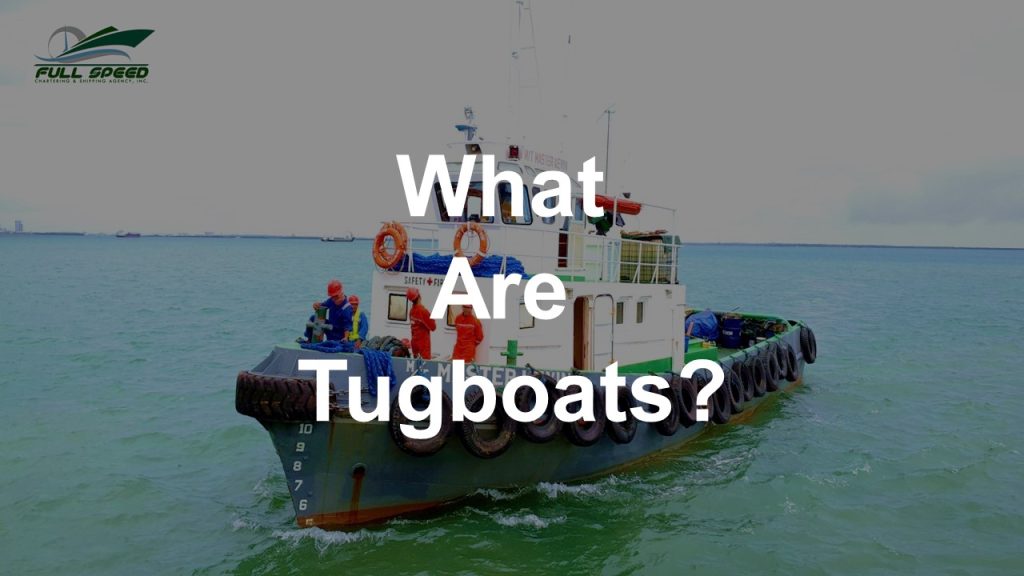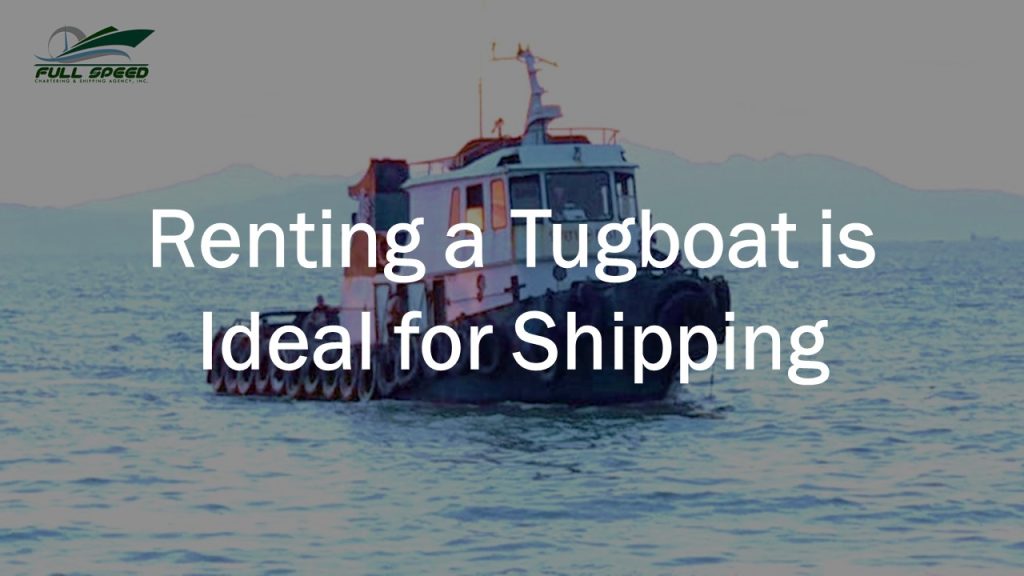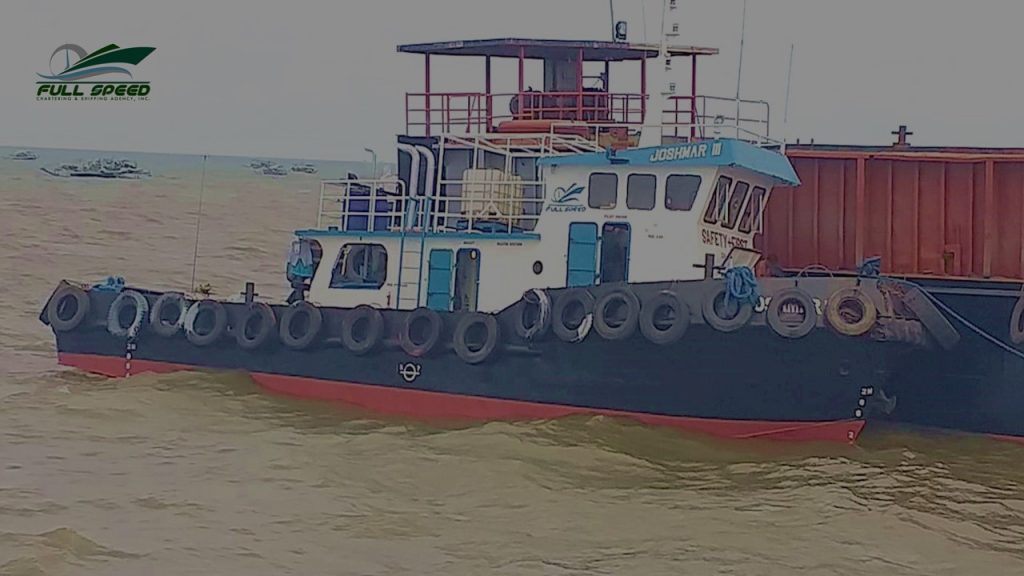Tugboats in the Philippines are the unsung heroes of the maritime world, silently assisting massive vessels in maneuvering through tight spaces and treacherous waters. While they may all share a common purpose, tugboats in the Philippines come in various shapes and sizes, each designed to tackle specific challenges at sea. From conventional tugs with their powerful engines to popular tractor tugs that can change direction effortlessly, there is a diverse fleet of tugboats serving different purposes across the globe. In this article, we will explore eleven different types of tugboats in the Philippines that showcase the incredible versatility and ingenuity behind these mighty vessels. So fasten your life jacket and get ready to embark on a journey through the fascinating world of tugboat classification!
Click here to view our available tugboats in the Philippines.
Click here to view our tugboat shipbuilding capabilities.
Overview of the Importance of Tugboats in the Philippines
Tugboats in the Philippines may not be the most glamorous vessels on the water, but their importance cannot be understated in a country like the Philippines, with its vast archipelago and bustling ports. These sturdy little workhorses play a crucial role in ensuring smooth maritime operations by assisting larger ships in maneuvering through tight spots, strong currents, and narrow channels.
One key aspect of tugboats’ significance lies in their ability to enhance port efficiency. With their powerful engines and specialized design, tugboats in the Philippines can safely guide colossal container ships, oil tankers, and other massive vessels into berths or through congested waters. This saves valuable time for both ship operators and port authorities, streamlining cargo transfers and expediting trade flow.
Another area where tugboats in the Philippines prove invaluable is marine salvage operations. In situations where a ship runs aground or faces mechanical failure at sea, these nimble boats quickly come to the rescue. Tugboats are equipped with specialized equipment such as towing winches and firefighting capabilities that enable them to stabilize distressed vessels or tow them to safety. Their swift response plays a critical role in minimizing environmental damage caused by potential spills or accidents at sea.
All things considered, despite their unassuming appearance, tugboats in the Philippines are unsung heroes of the maritime industry. Without their sheer power and agility, navigating through Philippine waters would become an arduous task for even the largest ships.
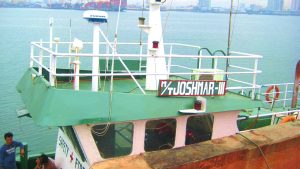
What is a Tugboat?
A tugboat may seem like a small vessel compared to massive cargo ships or majestic cruise liners, but its role in the maritime industry cannot be underestimated. These sturdy and powerful boats play a crucial role in assisting larger vessels in maneuvering through narrow waterways, docking or undocking from ports, and even rescuing distressed ships during emergencies. They are like the unsung heroes of the sea, quietly working behind the scenes to ensure smooth and safe operations.
While tugboats in the Philippines may all serve a similar purpose, there are actually various types of these robust vessels designed for different tasks. For instance, we have conventional tugboats that boast high horsepower and sturdy construction for heavy-duty towing operations. Then, there are tractor tugs with a more specialized design featuring a low-profile hull shape that provides enhanced maneuverability when pushing or pulling other vessels. Furthermore, there are Azimuth stern drive (ASD) tugs equipped with rotating propulsion units that allow them to operate efficiently in any direction without needing to turn their entire structure.
Although often overlooked by many observers on land or at sea, tugboats in the Philippines embody power and reliability packed into their compact frames. These versatile vessels come in different shapes and sizes, specifically engineered for diverse maritime support functions. While they may not command attention like colossal ships sailing across oceans, it is essential to recognize their indispensable role as the unsung workhorses of our waterways.

Different Types of Tugboats in the Philippines
Tugboats in the Philippines are the unsung heroes of the maritime world, tirelessly working to keep ships safe and navigate them through tricky waters. They come in a variety of shapes and sizes, each specifically designed for different tasks. In the Philippines, there are 11 types of tugboats that play a crucial role in supporting various maritime operations.
The 11 examples barely scratch the surface when it comes to showcasing the diverse range of tugboats operating in Philippine waters.
1. Harbor Tugboats in the Philippines: Essential for Port Operations
Harbor tugboats in the Philippines play a crucial role in the smooth operation of ports in the Philippines. With more than 7,000 islands and numerous busy seaports, these robust vessels are essential for maneuvering large ships through narrow channels and congested waters.
One of the key advantages of harbor tugboats in the Philippines is their ability to provide precise control and maneuverability. These powerful boats assist in docking and undocking large cargo vessels, ensuring safe navigation in challenging port environments. Their strong engines and specialized equipment allow them to handle heavy loads efficiently, making them vital assets for any port’s daily operations.
Moreover, harbor tugboats in the Philippines also facilitate efficient cargo transfers from ship to shore or vice versa. By providing effective towing capabilities, they help increase efficiency and minimize delays in loading and unloading processes. This translates into cost savings for shipping companies while enhancing overall productivity at the port.
Harbor tugboats in the Philippines are indispensable tools for the successful functioning of ports in the Philippines. With their exceptional maneuverability and towing capabilities, these sturdy vessels ensure safe navigation through busy waterways while maximizing operational efficiency. As maritime trade continues to grow in the country, investing in modernized harbor tugboats becomes even more crucial to maintaining a competitive edge on an international scale.
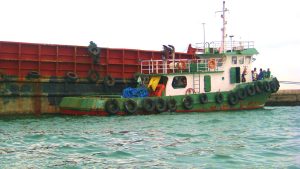
2. Ocean Tugboats in the Philippines: Powerhouses for Long-distance Towing
Ocean tugboats in the Philippines are the unsung powerhouses of the maritime industry, especially when it comes to long-distance towing. These formidable vessels play a crucial role in ensuring the safe and efficient transportation of goods across vast stretches of ocean. Equipped with powerful engines and advanced navigation systems, ocean tugboats in the Philippines are capable of pulling massive loads over thousands of nautical miles.
One interesting aspect of ocean tugboats in the Philippines is their versatility. Not only do they carry out towing operations for large ships and barges, but they also assist in salvage operations during marine accidents or emergencies. With their robust construction, these mighty vessels can withstand rough sea conditions while providing essential support to other maritime activities.
In addition to their impressive strength and endurance, ocean tugboats in the Philippines also require skilled crews that possess extensive knowledge of navigation techniques and practical experience in handling such complex machinery. This makes the field highly specialized and creates opportunities for seafarers to develop new skills and expertise within this niche sector.
Understanding the importance and capabilities of ocean tugboats in the Philippines sheds light on how these powerhouses facilitate long-distance towing operations in the Philippines’ expansive waters. Their contributions ensure vital connections between islands, support maritime trade, aid in disaster response efforts, and underscore the necessity for well-trained professionals who keep this vital industry afloat.
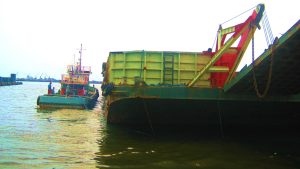
3. Articulated Tugs and Barges in the Philippines: Versatile Combination Vessels
Articulated Tugs and Barges (ATBs) are taking the maritime industry in the Philippines by storm with their versatility and efficiency. Unlike traditional tugboats, ATBs consist of a tugboat and a barge that is connected through an articulation mechanism, allowing them to function as one unified vessel. This unique combination offers several advantages, such as increased cargo capacity, improved stability, and maneuverability.
One of the key benefits of ATBs is their ability to transport large amounts of cargo. The barge component of the vessel provides ample space for carrying goods such as petroleum products, dry bulk commodities, and even containerized cargo. With this enhanced capacity, ATBs can significantly reduce the number of trips required to transport goods compared to conventional tugboats in Cebu, Navotas, Subic Bay, Manila, Cavite, Batangas, Davao, and Zambales. This not only saves time but also reduces fuel consumption and overall transportation costs.
Moreover, the articulation mechanism between the tugboat and the barge allows for better stability and maneuverability. The connection enables both components to move independently while still maintaining a strong link between them. This flexibility is particularly valuable when navigating narrow waterways or maneuvering in tight spaces like ports or docking areas. The ability to articulate also enhances safety during towing operations by reducing stress on the towline and decreasing the risk of accidents or equipment damage.
Overall, articulated tug-barges present a compelling solution for various maritime transportation needs in the Philippines. Their versatility in handling different types of cargo, coupled with increased efficiency, makes them a valuable asset in our ever-evolving maritime industry.
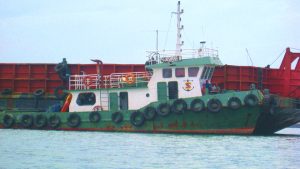
4. Voith Schneider Tugboats in the Philippines: Unique Propulsion System
One type of tugboat that stands out from the rest in the Philippines is the Voith Schneider Tugboat. This unique vessel boasts a one-of-a-kind propulsion system that allows it to navigate with exceptional maneuverability and stability. Unlike traditional tugboats in the Philippines, which rely on fixed propellers or azimuth thrusters, Voith Schneider Tugboats utilize a circular arrangement of vertically oriented blades known as cycloidal propellers.
The cycloidal propellers on a Voith Schneider Tugboat can be individually controlled to move and rotate independently, allowing for precise movements in any direction. This innovative design is particularly advantageous in busy ports where tight spaces are common. The tugboat can move sideways without needing to turn or reposition itself, making it ideal for assisting large vessels during docking or undocking maneuvers.
Furthermore, the Voith Schneider Tugboat’s ability to change the direction of thrust instantaneously grants it impressive stability, even in rough waters. Unlike conventional tugboats in the Philippines that may be affected by wind and waves, this propulsion system enables precise control over both forward and lateral movements. Overall, these unique features make the Voith Schneider Tugboat a crucial asset in maintaining efficient operations within Philippine ports while ensuring utmost safety and maneuverability for large ships navigating through congested waterways.
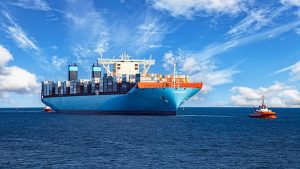
5. Azimuthing Stern Drive (ASD) Tugboats in the Philippines: Superior Maneuverability
ASD tugboats in the Philippines, also known as azimuthing stern drive tugboats, are revolutionizing the maritime industry in the Philippines with their superior maneuverability. Unlike traditional tugboats in Manila, Zamboanga, Palawan, Iloilo, Cagayan de Oro, and Quezon that rely on a fixed propeller and rudder configuration, ASD tugs feature propulsion units that can rotate 360 degrees. This enables them to change direction instantly and perform complex maneuvers with precision.
One of the key advantages of ASD tugboats in the Philippines is their ability to navigate tight spaces and congested ports effectively. With their omnidirectional propulsion system, these tugs can pivot around their own axis and move sideways without the need for assistance from additional tugs or thrusters. This not only reduces operational costs but also minimizes the risk of accidents or damage to other vessels in busy harbors.
Furthermore, the enhanced maneuverability of ASD tugboats in the Philippines greatly improves safety during ship docking operations. The quick response time provided by these tugs allows for more precise control when approaching larger vessels, ensuring a smooth and safe mooring process. In addition, the ability to easily reposition themselves in any direction mitigates risks associated with unpredictable currents or strong winds often found in coastal areas in the Philippines.
ASD tugboats in the Philippines have transformed the way maritime operations are carried out in the Philippines through their unrivaled maneuverability capabilities. These exceptional vessels are not only enhancing efficiency and reducing costs but also increasing safety measures across busy ports and harbors.

6. Salvage Tugboats in the Philippines: Their Role in Recovering Ships and Cargo
Salvage tugboats in the Philippines play a crucial role in the maritime industry by recovering ships and valuable cargo in distress. In the Philippines, where typhoons and natural disasters are common, these tough vessels are a lifeline for both local and international shipping companies. Equipped with powerful winches, cranes, and specialized diving equipment, salvage tugboats are able to navigate treacherous waters to rescue stranded vessels or retrieve lost cargo from the depths below.
But their job is far from easy. Salvage operations require careful planning and coordination, as well as skilled crew members who can handle high-pressure situations with calm efficiency. These brave men and women often risk their lives to undertake dangerous underwater operations or face turbulent sea conditions while towing large ships back to safety. Their expertise not only brings relief to ship owners but also helps prevent environmental disasters by containing fuel spills or removing hazardous substances that may have leaked during accidents.
The importance of salvage tugboats in the Philippines cannot be underestimated within the maritime industry, as they ensure the efficient recovery of ships and cargo during perilous events at sea. With their robust capabilities and unwavering dedication, these resilient vessels contribute significantly to safeguarding lives and preserving economic interests in the Philippines’ bustling shipping lanes.
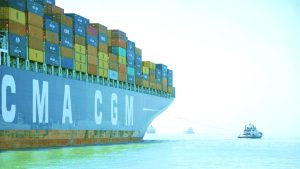
7. Anchor Handling Tug Supply (AHTS) Vessels in the Philippines: Combining Towing and Supply Capabilities for Oil Rigs
Anchor Handling Tug Supply (AHTS) vessels play a crucial role in the offshore oil and gas industry in the Philippines. These versatile vessels are specifically designed to combine the towing abilities of traditional tugboats in the Philippines with the supply capabilities needed for servicing offshore oil rigs. With their powerful engines and dynamic positioning systems, AHTS vessels can handle anchor handling operations, tow heavy equipment and materials, and provide essential supplies to oil rigs.
One of the unique features of AHTS vessels is their ability to handle anchors efficiently. Anchors are critical components in mooring offshore platforms, and AHTS vessels are equipped with specialized winches and cables that allow them to retrieve or deploy these heavy anchors with precision. This capability ensures that drilling rigs remain securely positioned even in adverse weather conditions, promoting safe operations in challenging environments.
Moreover, AHTS vessels also have significant storage capacity for fuel, water, supplies, and other essentials required by offshore personnel. They act as floating warehouses, ensuring that crew members on oil rigs have everything they need without having to rely solely on helicopters or boats for transportation. This integrated supply function of AHTS vessels not only improves operational efficiency but also contributes to cost savings for companies operating in the oil and gas industry.
In conclusion, Anchor Handling Tug Supply (AHTS) vessels offer a unique combination of towing power and supply capabilities that are vital for supporting offshore oil rig operations in the Philippines.

8. Icebreaking Tugboats: Their Crucial Task in Navigating Icy Waters
Icebreaking tugboats play a crucial role in navigating icy waters, a task often overlooked due to the country’s tropical climate. These powerful vessels are specifically designed to break through ice and clear paths for other ships, ensuring safe and efficient navigation in frozen regions. While the Philippines may not have extensive icy waters like other countries, there are still dockyards in Cavite that manufacture these types of tugboats in the Philippines and export them to cold countries.
One of the key areas where icebreaking tugboats prove their worth is in supporting communities located near icy bodies of water. They enable the essential transportation of goods during freezing conditions, avoiding disruptions that could lead to shortages of vital supplies such as food and medicine. In addition, these tugboats also support rescue operations during emergencies by breaking through ice blocks and providing access routes for emergency responders.
Despite the relatively limited presence of icy waters in the Philippines, having icebreaking tugboats ready for deployment showcases forward-thinking preparedness for potential extreme weather scenarios. These vessels not only ensure smooth navigation but also contribute to minimizing potential economic losses caused by severe weather events. By investing in such capabilities, the Philippines displays its commitment to adaptability and resilience when faced with the unpredictable challenges posed by climate change.
Overall, while their tasks may be lesser-known compared to their counterparts operating in Arctic or Antarctic regions, icebreaking tugboats play a vital role year-round by ensuring safety, connectivity, and essential services within vulnerable communities situated near colder parts of the country’s waterways.
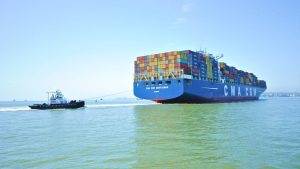
9. Tractor Tugboats in the Philippines: Unmatched Pulling Power
One type of tugboat that stands out in the Philippines is the tractor tugboat. These impressive vessels are equipped with powerful engines and unique designs that allow them to perform tasks other tugboats simply cannot handle. Tractor tugboats in the Philippines have unmatched pulling power, making them ideal for handling heavy loads or maneuvering large ships in tight spaces.
Unlike traditional tugboats in the Philippines, tractor tugboats use a combination of propulsion methods to generate tremendous pulling force. They feature azimuth thrusters, also known as Z-drives, which are propellers that can rotate 360 degrees. This allows tractor tugs to exert force in any direction without having to turn their hulls around. Furthermore, their design helps distribute the weight evenly across the vessel, enhancing stability and control during towing operations.
With their remarkable capabilities, tractor tugboats in the Philippines play a crucial role in ensuring safe and efficient maritime operations in the Philippines. Whether it’s assisting with docking procedures or rescuing distressed vessels, these powerhouse boats are indispensable assets on our waterways. So next time you see a tractor tugboat working its magic at sea, take a moment to appreciate its exceptional pulling power and the vital role it plays in keeping our marine industry running smoothly.
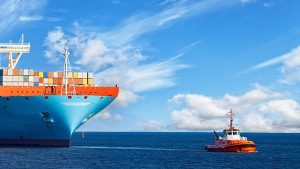
10. Firefighting Tugboats in the Philippines: Protecting Ports and Vessels
Firefighting tugboats in the Philippines play a vital role in protecting ports and vessels in the Philippines. These powerful and agile boats are equipped with specialized firefighting equipment that allows them to respond to emergencies on the water quickly. With their high-capacity pumps, water cannons, and foam systems, these tugboats can effectively extinguish fires on ships, docks, and other maritime structures.
One of the key advantages of firefighting tugboats in the Philippines is their ability to navigate crowded ports and tight spaces that larger firefighting vessels cannot reach. This makes them essential for protecting vessels docked in congested harbors or those undergoing repairs at shipyards. In addition to their firefighting capabilities, these tugboats also serve as emergency response units for other maritime incidents, such as fuel spills or search-and-rescue operations.
The presence of firefighting tugboats in the Philippines ensures that port authorities can promptly address any potential fire hazards, minimizing the risk of catastrophic accidents like ship explosions or extensive property damage. Their quick response time and maneuverability make them invaluable assets for preserving maritime safety in the Philippines. As the shipping industry continues to grow in this archipelagic nation, investment in these specialized towing boats becomes even more crucial to protect both human lives and precious cargo from fire-related incidents at sea.
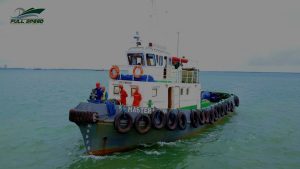
11. Offshore Support Vessels (OSVs) in the Philippines: Multi-purpose Assistance at Sea
Offshore Support Vessels (OSVs) play a crucial role in the maritime industry, providing multi-purpose assistance at sea. These versatile vessels are equipped with specialized equipment and facilities to support various offshore activities, including oil and gas exploration, deep-sea drilling, underwater construction, and maintenance work. In the Philippines, OSVs are an essential part of the country’s maritime infrastructure and contribute significantly to its growing economy.
One important aspect of OSVs in the Philippines is their ability to provide logistical support for remote offshore locations. These vessels have large storage capacities for fuel, water, provisions, and equipment, allowing them to transport supplies to offshore platforms or remote locations that would otherwise be inaccessible by traditional means. This capability is particularly vital for supporting oil and gas exploration operations in the country’s vast archipelago.
Furthermore, OSVs in the Philippines also serve as emergency response vessels during natural disasters or accidents at sea. Equipped with firefighting capabilities, medical facilities, and dedicated rescue teams trained in maritime rescue techniques, these vessels can rapidly respond to emergencies and ensure the safety of personnel aboard offshore installations or affected vessels. Their quick response time and efficient coordination make them invaluable assets during times of crisis.
Offshore Support Vessels (OSVs) in the Philippines are not just ordinary ships; they are multi-purpose assistance providers at sea.
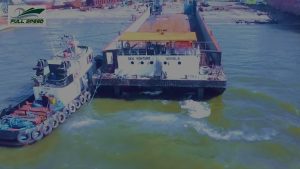
Types of Tugboats Based on Size
1. Small Utility Tugboats in the Philippines: These compact and versatile tugboats are essential for maneuvering smaller vessels in tight spaces or shallow waters. With their nimble size, they can easily navigate through narrow canals or busy harbors, making them indispensable in busy port areas.
2. Medium Harbor Tugs in the Philippines: As the name suggests, medium harbor tugs are designed to handle a wide range of tasks within a harbor environment. They have more powerful engines and greater towing capabilities than small utility tugboats, allowing them to assist larger vessels when necessary. These tugs play a crucial role in ensuring the smooth flow of maritime operations by safely guiding massive ships through crowded docks.
3. Ocean-Going Tugs in the Philippines: Built for long-haul journeys across vast open seas, ocean-going tugs are equipped with robust engines and enhanced stability features. They can endure rough weather conditions and extended voyages while providing reliable towing services to large ships in need of assistance during emergencies or breakdowns mid-journey.
Understanding the different types of tugboats in the Philippines based on size is essential to grasp their unique roles within maritime industries fully. From small utility tugs that navigate confined spaces to ocean-going tugs that brave the open oceans, each type serves an important purpose in keeping our global shipping networks running smoothly as they work tirelessly behind the scenes of international trade and commerce.
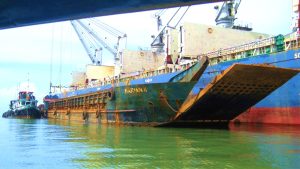
Types of Tugboats Based on Propulsion Systems
Tugboats in the Philippines are essential vessels that play a crucial role in maritime operations. They come in various types, each equipped with different propulsion systems designed to suit specific requirements and conditions. One of the most common types is the conventional diesel-powered tugboat, which utilizes internal combustion engines paired with fixed-pitch propellers to generate thrust. These tugboats in Pampanga, Laguna, Cotabato, Zambales, and Camarines Sur, are known for their reliability and versatility, making them ideal for a wide range of applications such as towing, pushing barges, and assisting large vessels during port maneuvers.
Another type of tugboat gaining popularity is the hybrid electric propulsion system. This innovative technology combines traditional diesel engines with electric motors and batteries. The use of electric power allows these tugboats in the Philippines to operate silently, reducing noise pollution in ports and harbors. Additionally, it provides operators with multiple operational modes for improved fuel efficiency or enhanced performance when needed. Hybrid electric tugboats in the Philippines also feature regenerative braking systems that recharge the batteries while decelerating or maneuvering, further improving their overall energy efficiency.
Overall, the variety in propulsion systems within the world of tugboats in the Philippines highlights an ongoing commitment to adapting and embracing sustainable technology within maritime industries. From conventional diesel-powered vessels to hybrid electric innovations, each type offers unique benefits while ensuring efficient operations on waterways around the world.
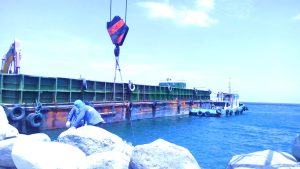
Specialized Types of Tugboats in the Philippines
One specialized type of tugboat commonly found in the Philippines is the Voith Schneider Tug. This unique tugboat design features a circular rotor with blades that can be rotated 360 degrees. This allows for incredible maneuverability and control, making it ideal for navigating narrow channels and confined spaces. The Voith Schneider Tug can move sideways, diagonally, or even rotate on the spot, ensuring precise positioning during docking operations.
Another specialized tugboat found in the Philippines is the firefighting Tug. As its name suggests, this type of tugboat is equipped with powerful firefighting capabilities to handle emergencies at sea. These tugs are fitted with water cannons capable of spraying water over long distances to extinguish fires on ships or ports. Moreover, they often have foam-delivery systems to smother fires by covering them with a layer of foam rather than just water alone. These firefighting tugs play a critical role in maritime safety and are an essential asset during emergency situations.
Overall, these specialized types of tugboats in the Philippines demonstrate how innovation and adaptation have shaped the industry by addressing specific challenges faced by ship operators and naval forces alike in various scenarios, such as tight navigational spaces or firefighting emergencies at sea. By utilizing these unique types of towage vessels, the maritime industry can continue to overcome obstacles efficiently while ensuring safety remains paramount in all operations undertaken at sea.
Looking for Tugboats in the Philippines?
Full Speed Chartering and Shipping Agency, Inc. (FSCSAI) is the go-to company for those in search of well-maintained and cost-effective tugboats in the Philippines. Boasting a diverse fleet of vessels, FSCSAI offers a range of options to suit various needs and requirements. Whether you are in need of a powerful tugboat for offshore operations or a smaller vessel for maneuvering within tight spaces, FSCSAI has got you covered.
- Email us: info@fullspeedchartering.com
- Facebook Messenger: Click here
- Click here to inquire
What sets FSCSAI apart from its competitors is its commitment to providing reliable and high-quality services. Their tugboats are meticulously maintained to ensure optimum performance and safety at all times. With experienced and skilled crew members onboard, customers can rest assured that their vessels will be handled with utmost care and efficiency.
Furthermore, FSCSAI understands the importance of cost-effectiveness when it comes to chartering tugboats in the Philippines. They offer competitive rates without compromising on quality, making them an ideal choice for businesses looking to maximize the value of their investment.
If you’re on the lookout for reliable and cost-effective tugboats in the Philippines, Full Speed Chartering and Shipping Agency, Inc. should be your first port of call. With their well-maintained fleet and commitment to customer satisfaction, they provide superior service that guarantees optimal performance without breaking the bank. Say goodbye to your worries about finding the perfect tugboat; FSCSAI has got you covered!
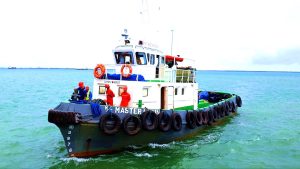
Takeaway: 11 Types of Tugboats in the Philippines
In conclusion, the world of tugboats in the Philippines is diverse and dynamic. From small harbor tugs to powerful anchor-handling tugs, these vessels play a crucial role in keeping maritime operations running smoothly. They are not just mere workhorses; they are essential partners that ensure safety, efficiency, and reliability on our seas.
One interesting aspect to note is how technology has revolutionized tugboat operations in recent years. With advancements like remote control capabilities and autonomous navigation systems, tugboat operators can now control their vessels from shore or even from thousands of miles away. This not only increases safety for crew members but also allows for more precise maneuvering in tight spaces.
Furthermore, the future of tugboats in the Philippines looks promising as sustainable solutions gain traction in the maritime industry. There is a growing demand for electric or hybrid-powered tugboats in the Philippines that reduce emissions and decrease reliance on fossil fuels. These eco-friendly options not only benefit the environment but also offer cost savings through fuel efficiency and reduced maintenance needs.
As we navigate forward into an era of technological advancements and environmental consciousness, it’s clear that the role of tugboats in the Philippines will continue to evolve. Whether it’s assisting with deep-sea oil rig operations or providing support during port construction projects, these versatile vessels will always have a vital place in our maritime activities.
